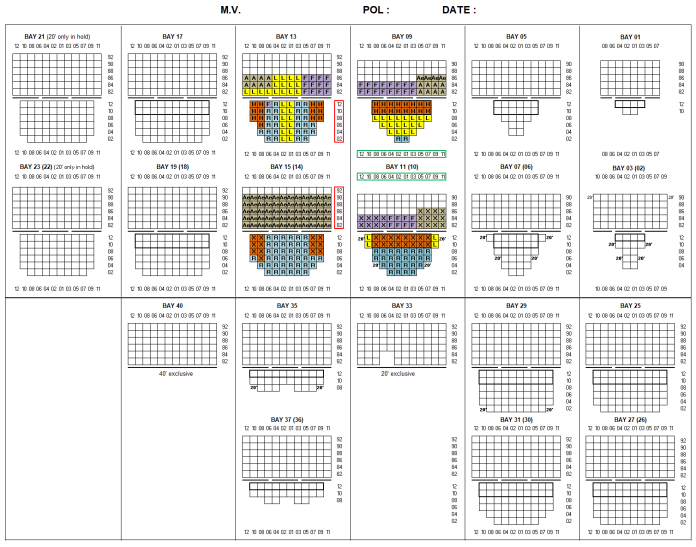FACTORS THAT INFLUENCE THE STORAGE OF CONTAINERS ON BOARD

Efficiently stowing cargo on a vessel is a complex process that requires careful planning and consideration of various factors. Modern technology has provided planners with specialized computer programs to aid them in this endeavor. These programs take into account the vessel’s route, ports of call, schedule, and cargo specifics to create an optimized stowage plan. Let’s delve into the essential parameters and other influencing factors that guide the storage of containers on board.
Essential Parameters for Stowage Planning:
- Vessel Route: The planned route of the vessel plays a crucial role in determining the sequence and arrangement of cargo containers. Ports of call and navigational considerations impact how containers are stored.
- Ports of Call: Different ports have varying infrastructural and logistical capacities. Planners must consider the facilities available at each port to ensure efficient loading and unloading of containers.
- Vessel Schedule: The vessel’s schedule influences the timeline for loading and unloading operations. Stowage planning must align with the vessel’s expected arrival and departure times.
- Current Cargo on the Vessel: The existing cargo layout affects the available space for new containers. Balancing the arrangement of incoming and onboard containers is essential for stability and proper weight distribution.
- Expected Cargo to Load: Anticipating the volume, type, and weight of cargo to be loaded helps planners allocate appropriate storage locations for each container.
Other Influencing Factors:
- Refrigerated Cargo (Reefer Containers): Reefer containers require proximity to power connections to maintain the required temperature. Accessibility for temperature checks is also a consideration.
- Dangerous Cargo: Containers containing dangerous goods must adhere to strict regulations. They are often categorized according to the International Maritime Dangerous Goods Code, ensuring they are stored safely away from potential sources of ignition and in accordance with their specific hazards.
- Out of Gauge Cargo: Cargo that doesn’t fit standard container dimensions poses a challenge. Special arrangements need to be made for such cargo to ensure stability and proper stowage.
- Dry Hide Containers: Containers carrying hides or leather have specific storage requirements to prevent damage and preserve their quality.
- Port of Discharge: The ultimate destination port affects how containers are stowed. Containers bound for early discharge ports might need to be placed in more accessible locations.
- Cargo Weight: Distributing weight evenly across the vessel is essential for stability and safety. Heavier containers are often placed lower in the stack.
- Container Size: Different container sizes (20ft, 40ft, etc.) require suitable storage locations based on available space and weight distribution considerations.
- Hatch Cover Clearance: Containers near hatch covers should be positioned carefully to ensure efficient loading and unloading operations.
- Visibility: Maintaining visibility from the bridge is crucial for the vessel’s navigational safety. Containers should not obstruct sightlines.
- Stability: Considerations like metacentric height (GM) and trim play a role in the vessel’s stability. Proper weight distribution contributes to safe navigation.
- Stack Weight: The weight of containers stacked on top of each other must be within safe limits to prevent structural damage.
- Strength Calculations: Structural integrity is a concern. Strength calculations, stress factors (SF), and bending moments (BM) influence container placement.
- Torsional Moments: Torsional forces can affect the vessel’s stability. Planners need to account for these forces when arranging containers.
- Flexibility: The stowage plan should allow for flexibility to accommodate changes in cargo volume or conditions.
- Special Containers: Containers with unique characteristics, such as open-top or flat-rack containers, require specific stowage arrangements to ensure their stability and protection.
In conclusion, stowing containers on board a vessel is a meticulous process that involves juggling multiple factors. From cargo characteristics to vessel stability, planners must navigate a complex web of considerations to create a safe and efficient stowage plan. With the aid of advanced computer programs and industry expertise, today’s maritime industry can strike a balance between maximizing cargo capacity and maintaining operational safety.
Perfect I was searching for this question.. thank you !!